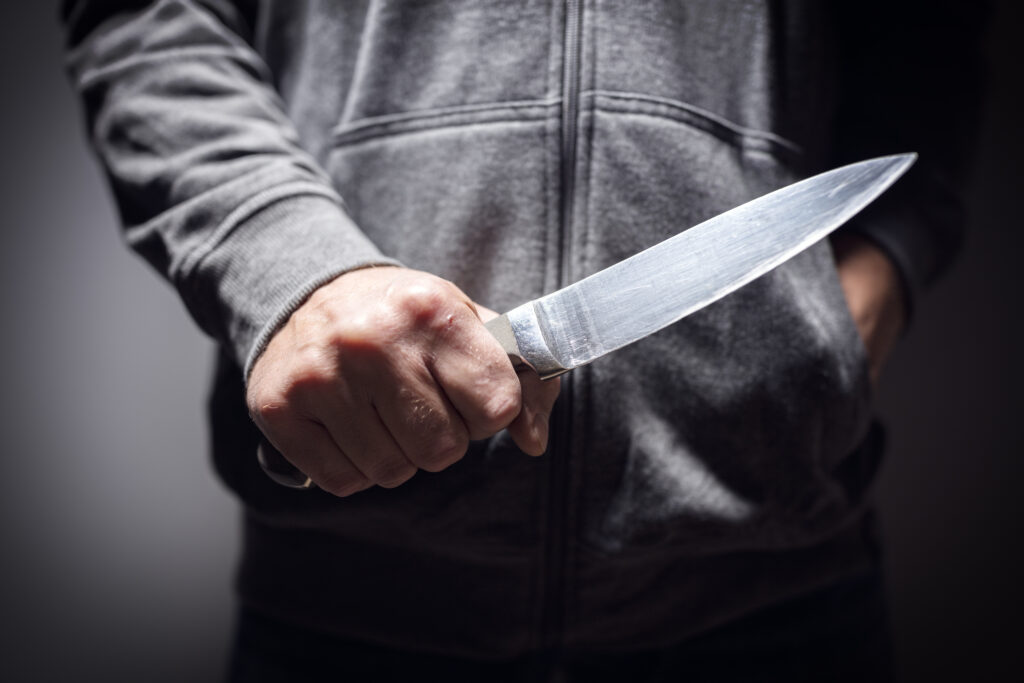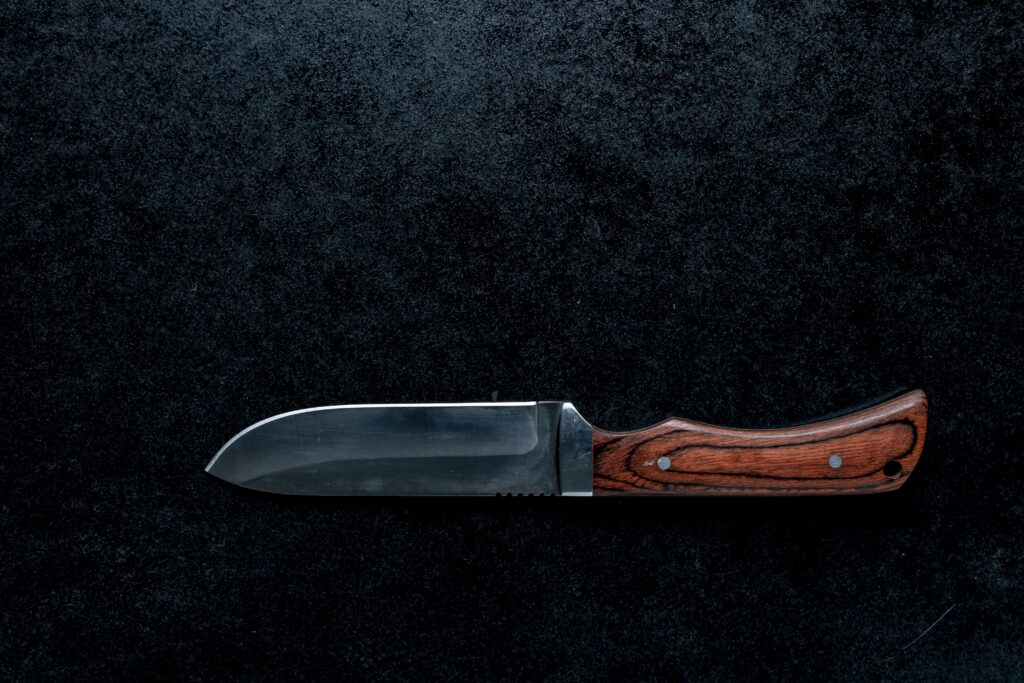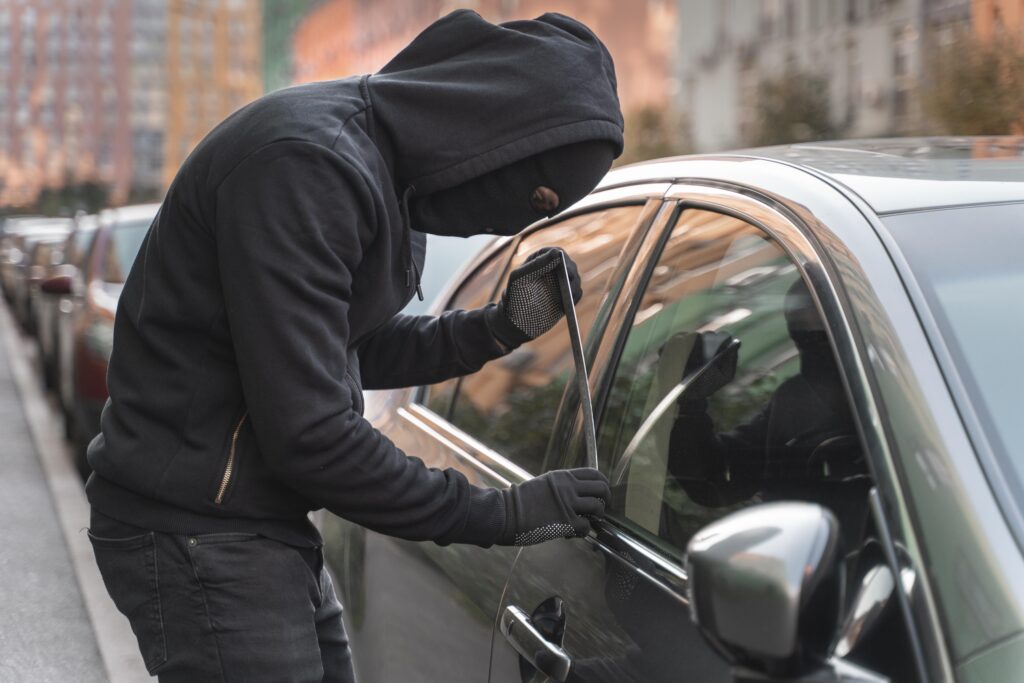Knives are some of the oldest tools humans make. From everyday carry (EDC) items to specialty tools related to specific trades, they’re part of most people’s daily lives. However, carrying a knife in California is not as simple as you might think.
California knife laws are complex. What kinds of knives you can carry, where, how, and what penalties you may face all depend on state statutes, local ordinances, how a knife is carried (open vs. concealed), your intent, and whether the knife is used or brandished.
This article discusses the basics of knife laws in California, what’s legal vs. illegal, defenses if you’re facing knife-related charges, and common questions. If you’re in trouble under California knife laws, contact an experienced criminal defense lawyer.
A Brief Description of California’s Knife Law
California has multiple Penal Code sections that relate to knives, how they’re carried, and when and where they can be used. Some laws ban certain knives completely, while others specify how a knife is carried or the concealment of fixed-blades, dirks, daggers, or switchblades. Some statutes let local jurisdictions impose additional restrictions beyond what the state law requires.
The law distinguishes between:
- Legal knives that can be carried (sometimes openly, sometimes concealed)
- Illegal knives (certain types by their design or mechanical features)+
- Prohibited locations (schools, private businesses, and certain public buildings)
- Use or display of knives as weapons (brandishing, assault, etc.)
California knife laws don’t ban all knives. However, many knives that are legal to own may be illegal to carry (especially concealed), and many situations (where, how, and what type) change the legal situation.
Types of Knives Legal to Carry in California
Under current California law, the following types of knives are generally legal (subject to how they’re carried, where, and local laws):
- Folding knives, so long as they are folded (closed). These include pocket knives, Swiss Army-style knives, and many utility knives. The key is that the blade must not be exposed/locked into place if classified as a “dirk or dagger” when open.
- Non-locking folding knives (slip-joint types) are safer from the risk of being treated as “dirks or daggers” when open.
- Open carrying of fixed blade knives (daggers, dirks, etc.) may be legal if they are openly carried in a sheath suspended from the waist (visibly carried and not concealed). This is under Penal Code § 21310.
These are legal in general, but with a few important caveats: if you carry in certain prohibited places, or the knife has certain features, or you conceal it improperly, the legal risk increases significantly. For instance, if you carried a concealed knife into a school, you’d face some pretty significant issues even if the knife was technically legal.
Types of Knives That Are Illegal to Carry in California
California law bans or heavily restricts certain kinds of knives, either completely illegal or illegal under many circumstances:
- Switchblades: Under Penal Code § 17235/ 21510, a switchblade with a blade 2 inches or longer is prohibited. These include knives that open automatically via button, spring, wrist flick, or that operate in a similar way.
- Other types of restricted or “prohibited knives include:
- Ballistic knives
- Cane swords or cane knives
- Lipstick case knives
- Writing pen knives
- Belt buckle knives
- Undetectable knives (i.e., those designed to evade metal detectors)
- Shurikens/throwing stars/ninja stars
- Dirks or daggers carried concealed: Penal Code § 21310 makes it illegal to carry a “dirk or dagger” in a concealed fashion. But what is a “dirk or a dagger”? It’s broadly defined and includes fixed blades capable of ready use as stabbing weapons, folding knives that lock, or those whose blade is exposed and locked into position.
- Fixed blade knives: If carried concealed, many fixed blade knives (especially if capable of being used as dagger-style weapons) are illegal unless carried openly in a sheath.
- Location-based prohibitions: Even otherwise legal knives can become illegal in certain places (schools, public buildings, etc.). For example, knives with blades over certain lengths, or certain types like dirks or daggers, are banned on K-12 school grounds, university grounds, etc.
Is Brandishing a Weapon Illegal?
Yes, brandishing a weapon, including a knife, is illegal under certain circumstances in California. Under Penal Code § 417, a person commits a crime by drawing or exhibiting a weapon (including a knife) in a rude, angry, or threatening manner, or using it in a fight.
Even if you are not using a knife to stab, just brandishing (displaying it in a threatening way) can mean criminal charges. Of course, the context matters: when, where, how, whether you were in fear, whether there was provocation, etc. It’s an additional charge that can be piled on with other offenses.
Penalties
Violations of California’s knife laws may mean either misdemeanor or felony charges, depending on a few different factors, like the type of knife, how it was carried (concealed vs. open), whether the location is sensitive (school, courthouse, public building), whether it was used in or intended for a crime, your criminal history, and more.
Here are some of the typical penalties:
| Offense | Possible Penalties |
| Carrying a concealed dirk or dagger (Penal Code § 21310) | Misdemeanor: up to 1 year in county jail and/or up to $1,000 fine; or felony: 16 months, 2 or 3 years, depending on severity. |
| Possession/use of a switchblade (blade ≥ 2 in) | Misdemeanor: up to 6 months jail and/or up to $1,000 fine. |
| Possession of other prohibited knives (ballistic, undetectable, etc.) | May be misdemeanor or felony; can carry jail time up to 1 year (misdemeanor), or longer (felony), and fines up to $10,000 in some cases. |
| Bringing prohibited knives into schools/school grounds | Violations under PC § 626.10 can result in misdemeanor or felony charges and jail time. |
| Possession in public buildings / public meetings (PC § 171b) | Prohibited knives (switchblades, for instance) or fixed blade knives over 4″ (in some situations) can lead to misdemeanor or felony penalties. |
| Brandishing a weapon (PC § 417) | Misdemeanor: 30 days to 1 year in jail (and/or fine); under aggravating circumstances or related offenses, could be a felony, up to 2 to 3 years. |
Because many of these offenses are “wobbler” charges (meaning the prosecutor may charge them as either a misdemeanor or a felony depending on circumstances), the actual outcomes can vary a great deal.
Defenses of Knife Charges
If you’re accused under California knife laws, there are several possible defenses depending on your situation:
1. Lack of knowledge/intent
If you didn’t know the knife had prohibited features (for instance, you didn’t realize it was a switchblade or didn’t realize the mechanism), that may help.
2. Illegal search & seizure
If law enforcement found the knife through an unlawful stop, search, or seizure, the evidence may be excluded (suppressed), which can lead to a dismissal.
3. Your knife was actually legal
Showing that your knife does not meet the legal definition of a prohibited weapon — maybe because blade length is under cutoff, or it’s a non-locking folding knife, or it wasn’t concealed, etc.
4. Open carry instead of concealed carry
Sometimes people are charged with carrying a concealed dirk/dagger, but the knife was carried openly (in a sheath, visibly). Open carry can be a defense in those cases.
5. Self-defense
If you used or brandished the knife because you reasonably believed you or someone else was in imminent danger, and the force used was reasonable, self-defense may justify or mitigate the offense.
6. Procedural/constitutional issues
Violation of your rights (your Miranda rights, due process, etc.), chain of custody, or proving the knife was in fact the one alleged. Also challenging the statute’s application to your specific knife.
Because of the many factors (the knife type, how it is carried, location, and intent), having an attorney review the specifics is important.
FAQs
Here are some frequently asked questions about California knife laws:
1. What is a legal size of a knife to carry in California?
There is no simple, single size that applies to all knives in California. Blade length becomes relevant in certain laws. For example:
- Switchblades with a blade two inches or more are illegal.
- On school grounds, knives with blades longer than 2.5 inches are usually illegal.
- In public buildings, fixed-blade knives with blades over 4 inches may be restricted.
But many folding knives (if closed) have no specific size limit under state law, although local ordinances sometimes impose size limits. Always check local law.
2. Are folding knives legal in California?
Yes, folding knives are generally legal if folded/closed. Non-locking folding knives (slip joint) are generally more widely allowed. But if the blade is exposed and locked into place, or if the folding knife has features that classify it as a switchblade or dirk/dagger, it may be regulated or illegal.
3. Can you defend yourself with a knife in California?
Yes, but only under strict conditions. California law allows self-defense: you have to reasonably believe you or someone else is in imminent danger of harm, and the force used has to be reasonably necessary under the circumstances. If you brandish or use a knife for self-defense in excess of what is reasonable, or use a knife that is itself illegal, or carry in a prohibited way, you may still face legal consequences.
Also, even if the knife you used is legal, brandishing a weapon (even in self-defense) may lead to additional charges, depending on behavior.
4. What is the difference between concealed carry and open carry?
- Open carry means the knife is visible: carried openly in a sheath, suspended from the waist, or otherwise visible. In many cases, open carry of fixed blade knives or daggers, etc., is permitted under state law if properly carried in a sheath.
- Concealed carry means the knife is hidden on your person (or in a container, purse, backpack, or otherwise not visibly carried). Under California law, concealed carry of certain knives is illegal: for example, carrying a concealed dirk or dagger is prohibited. Concealed carry can also increase the severity of other charges.
Legally, a knife carried openly in a visible sheath is less likely to violate concealment laws. But open carry rules still have limits depending on location and type of knife, and local jurisdictions may have stricter rules.
So, it’s important to understand open vs. concealed under California knife laws.
Contact a Defense Lawyer for Help
If you’re facing charges related to knife laws in California, whether for carrying an illegal knife, being charged with brandishing, or for using a knife in self-defense, you need a defense attorney who understands the complexities: the difference between knife types, how statutes are interpreted, local vs. state law, the potential defenses, and how to reduce penalties or avoid convictions.
Don’t wait. Contact the Law Office of David L. Faulkner right away. We can review your case, explain your rights, and help you build the strongest possible defense so you can protect your freedom and future.










